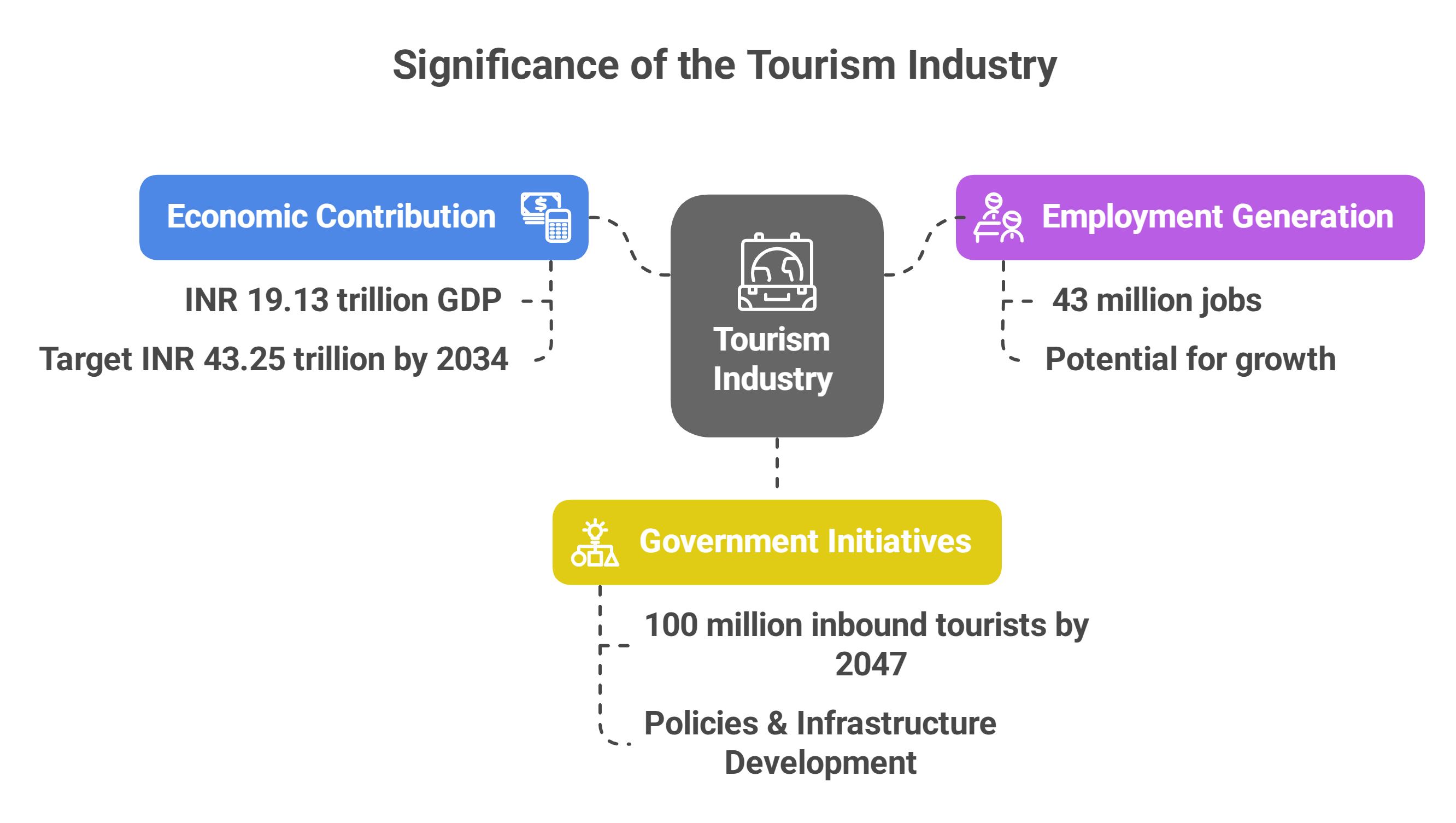Context:
A recent report by the Department-Related Parliamentary Standing Committee on Transport, Tourism, and Culture raised concerns over the Union Tourism Ministry's chronic underutilization of allocated funds. The findings suggest systemic inefficiencies hindering India's tourism sector's growth.
Key Findings:
1. Underutilization Trend:
In 2024-25, the Ministry used only ₹396.82 crore out of ₹2,479.62 crore allocated. In 2023-24, only 33.4% of the ₹2,400 crore allocations was utilized. This ongoing underperformance signals deep-rooted inefficiencies needing urgent reforms.
2. Administrative Bottlenecks:
The Ministry attributed underperformance to delays, administrative bottlenecks, and coordination issues. However, the committee found these explanations insufficient, pointing to deeper operational weaknesses.
Recommendations:
1. Integrated Digital Project Management System (IDPMS):
To improve fund management and transparency, the committee recommended implementing a centralized platform for tracking project lifecycles, from proposal submission to fund disbursal. The system would feature real-time status updates and automatic alerts for pending actions.
2. Tourism Implementation Rating System (TIRS):
A performance-based framework was suggested to evaluate states on their tourism project execution. States would be ranked based on efficiency, fund utilization, and documentation, fostering competition and rewarding high-performing regions with incentives like priority funding and relaxed procedural requirements.

Implications:
1. Growth of India’s Tourism Potential:
Chronic underutilization is a barrier to unlocking India’s tourism potential. Efficient use of funds is essential to developing infrastructure and positioning India as a global tourist destination.
2. Incentives for States:
States with strong implementation records will be incentivized with priority funding for new projects, procedural relaxations, and annual tourism excellence awards.
Significance of Tourism Industry:
Tourism is a major economic driver. In 2023, it contributed INR 19.13 trillion to India’s GDP, surpassing pre-pandemic levels. The sector also created 43 million jobs. The government aims to attract 100 million inbound tourists by 2047, increasing tourism's GDP contribution to INR 43.25 trillion by 2034.
Government Initiatives:
The government has taken steps to boost tourism:
- Niche Tourism: Promoting adventure, wellness, and eco-tourism.
- E-visas and 24X7 Helplines: Simplified visa processes and multilingual assistance.
- Paryatan Didi and Mitra: To enhance hospitality for foreign tourists.
Domestic Tourism:
Domestic tourism continues to thrive, with 2.51 billion visits recorded in 2023. Programs like Dekho Apna Desh and Udaan have helped increase awareness of India's lesser-known destinations.
Conclusion:
Addressing fund underutilization, improving administrative processes, and incentivizing states are essential for unlocking India’s tourism potential, which will contribute significantly to economic growth and global recognition.







